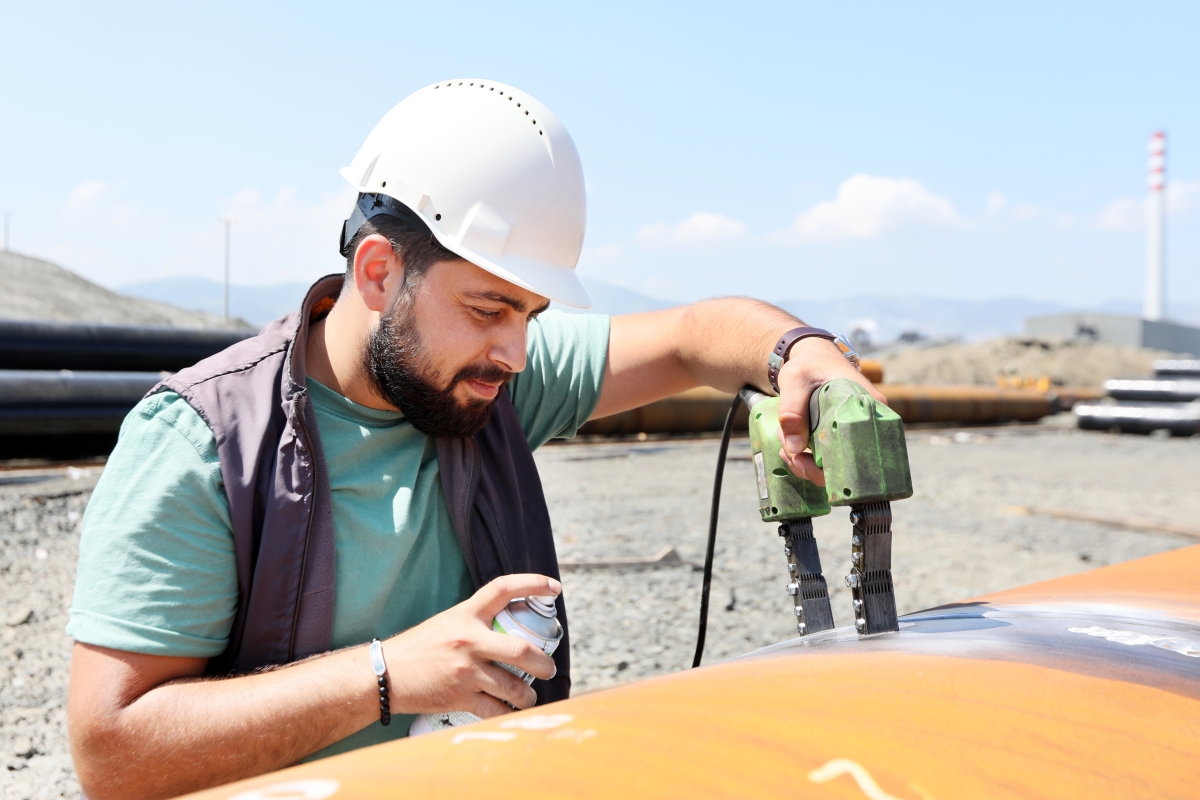Career Overview
Machine fitters:
- Fit, assemble and otherwise build heavy industrial machinery and transportation equipment, including aircraft engines
- Work in industrial machinery and transportation equipment manufacturing industries
Job Titles
Duties
Machine fitters perform some or all of the following duties:
- Read and interpret blueprints, sketches and diagrams to determine assembly operations
- Fit and assemble prefabricated metal parts to build heavy industrial machinery and equipment such as construction, farming, and processing machinery, railway vehicles and aircraft engines
- Move and align subassemblies and components using lifting and transporting devices such as overhead cranes
- Install major components such as gears, pumps, motors or hydraulic assemblies
- Inspect parts, subassemblies and finished products to make sure they are of good quality
Earnings
Earnings is income that workers receive in exchange for their labour. Depending on the type of employment, earnings can be in the form of wages (hourly), salaries (fixed monthly or annual) or self-employed earnings.
Work Environment
# Workers Employed
90% Employed Full Time
67%Key aspects of the work in this occupation:
- Work takes place in a controlled indoor environment
- Working with equipment, machinery or power/hand tools may be a source of injury
- Work may produce enough noise to cause marked distraction or possible loss of hearing
Career Pathways
Progression to supervisory positions is possible with experience.
Related Careers
Occupational Interests
It’s important to understand what kinds of occupations align with your interests.
For more about occupational interests visit Skills for the Future Workforce > Characteristics.
Here are the top occupational interest(s) for this career profile:
Education, Training and Skills
- Completion of secondary school is usually required
- Completion of a mechanical apprenticeship program, such as millwrighting, machining, pipefitting, automotive service or heavy equipment repair or Completion of a four-year machine fitter apprenticeship program, or
- Completion of five years of on-the-job training is usually required
- Completion of a two- to three-year college program in aircraft manufacturing or general fabrication is required for aircraft engine fitters
- Certification in a related trade may be required
For more information please see SkilledTradesBC's website at https://skilledtradesbc.ca.
Education programs in B.C.
The following program areas are related to this occupation:
- Machinist
- Plumbing/Pipefitting
- Aircraft Mechanic/Maintenance
- Auto Mechanics Related
- Heavy Mechanical Repair
- Industrial Mechanic/Millwright Related
- Construction & Trades Supervision/Management

Skills
Every job calls for a certain set of skills. Knowing those skills is the first step in finding a good career fit.
Here, you will find the 10 most relevant workplace skills. Some are more important to achieving success in a certain career than others. These skills may come naturally to you or you may need to gain them through education, training and experience.
See the list of work-related skills below, ranked in order of importance for this career. Check out the list and see if this career matches your skills—take that first step!
Watching gauges, dials or other indicators to make sure that a machine is working properly.
Conducting tests and inspections of products, services or processes to evaluate quality or performance.
Understanding written sentences and paragraphs in work-related documents.
Giving full attention to what other people are saying, taking time to understand the points being made, asking questions as appropriate, and not interrupting at inappropriate times.
Using logic and reasoning to identify the strengths and weaknesses of alternative solutions, conclusions or approaches to problems.
Keeping track of and assessing your performance, other individuals, or organizations to make improvements or take corrective action.
Talking to others to share information effectively.
Determining causes of operating errors and deciding what to do about it.
Performing routine maintenance on equipment and determining when and what kind of maintenance is needed.
Controlling operations of equipment or systems.
Labour Market Statistics
Discover data, facts and information that have been gathered and analyzed. Learn about the characteristics of the economy and labour market in B.C.
Employment
Find out about employment types and trends by region and industry.
Employment
90Employment by Region







| Region | Employment | % Employment of this Occupation |
|---|---|---|
| Cariboo | 0 | 0.0% |
| Kootenay | 0 | 0.0% |
| Mainland/Southwest | 45 | 52.9% |
| North Coast and Nechako | 0 | 0.0% |
| Northeast | 0 | 0.0% |
| Thompson-Okanagan | 10 | 11.8% |
| Vancouver Island/Coast | 30 | 35.3% |
Labour Market Outlook
The B.C. Labour Market Outlook is a 10-year forecast of the expected supply and demand for labour in the province. It’s usually updated every year. The purpose is to provide British Columbians with the knowledge to make informed decisions on careers, skills training, education and hiring.
Forecasted Job Openings (2024-2034)
20Forecasted Job Openings
Forecasted Employment Growth Rate
Composition of Job Openings
Job Openings by Region (2024-2034)







| Region | Job Openings | Avg. Annual Employment Growth |
|---|---|---|
| Cariboo | Not available | Not available |
| Kootenay | Not available | Not available |
| Mainland/Southwest | 20 | 1.7% |
| North Coast and Nechako | Not available | Not available |
| Northeast | Not available | Not available |
| Thompson-Okanagan | Not available | Not available |
| Vancouver Island/Coast | 10 | 0.7% |
Industry Highlights
Learn about the opportunities in B.C.'s major industries, including employment trends, earning potential, locations of work and more.
Forecasted Job Openings by Industry
| Industry | Job Openings (2024-2034) |
|---|---|
| Manufacturing | 20 |
| Public Administration | 10 |
Resources
Resource information is currently not available.








